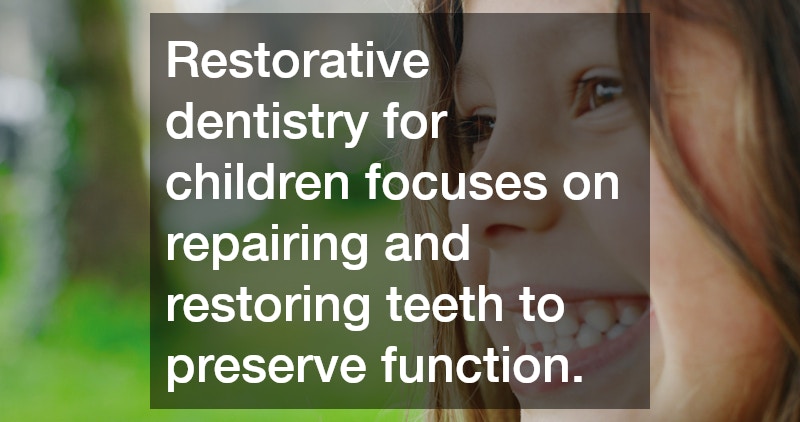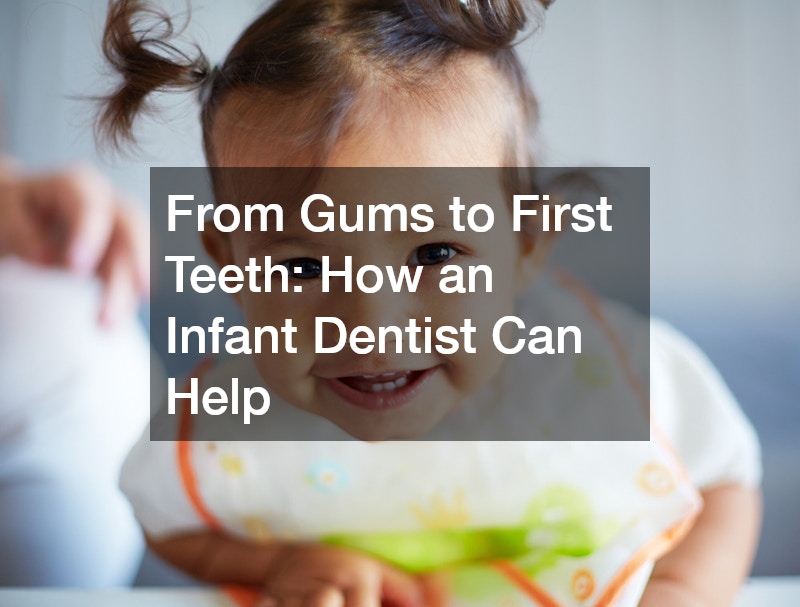
Maintaining a child’s oral health requires more than routine brushing and flossing. Sometimes, children experience cavities, trauma, or other dental issues that require restorative care. Restorative dentistry for children focuses on repairing and restoring teeth to preserve function, appearance, and long-term oral health. Understanding these procedures, their purpose, and how to prepare your child can make visits to a pediatric restorative dentist less stressful and more effective. This article explores essential information about pediatric restorative dentistry for parents.
What Is Restorative Dentistry in Children?
Restorative dentistry encompasses treatments aimed at repairing teeth that have been damaged by decay, injury, or developmental issues. Pediatric restorative care is tailored to the needs of growing children and focuses on both functionality and appearance.
Definition and Importance
Restorative dentistry involves procedures designed to restore the health, function, and aesthetics of teeth. For children, this is crucial because primary teeth not only support chewing and speech but also guide the proper development of permanent teeth. Timely restorative care prevents complications, reduces discomfort, and ensures a positive dental experience.
Common Procedures
Common restorative procedures for children include fillings, crowns, and dental sealants. Fillings are used to repair cavities, while crowns protect teeth that are severely decayed or weakened. Dental sealants are preventive restorations applied to the grooves of molars to prevent future decay. Some pediatric dentists may also provide space maintainers to preserve gaps for incoming permanent teeth.
Preventive Versus Restorative Care
While preventive care focuses on avoiding dental problems, restorative care addresses issues that have already developed. Preventive strategies include regular dental check-ups, fluoride treatments, and proper oral hygiene. Restorative procedures repair existing damage and prevent further decay or structural problems. Both approaches work together to support lifelong oral health.
Role of Pediatric Dentists
Pediatric dentists are specially trained to provide restorative care for children. They understand the unique needs of young patients, including behavior management, growth considerations, and comfort during procedures. Their expertise ensures that treatments are safe, effective, and designed to minimize anxiety. Pediatric dentists also educate parents on maintaining oral health between visits.
Outcomes and Benefits
Restorative dentistry helps children maintain healthy teeth, proper bite alignment, and a functional smile. Treated teeth are less likely to cause pain or infection, and children learn that dental care is a positive experience. Restorative procedures can also prevent more extensive treatments in the future, reducing stress for both the child and the parents.
When is Restorative Dentistry Needed for Kids?
Knowing when to seek restorative care can prevent complications and support healthy dental development.
Indicators of Dental Issues
Parents should watch for signs such as visible cavities, tooth pain, sensitivity to hot or cold foods, discoloration, or chips in the teeth. Gum inflammation and bad breath can also indicate dental issues. Early detection allows for timely treatment, which is generally easier and more effective.
Age Considerations for Treatment
Restorative dentistry can be performed at almost any age, depending on the child’s needs. Primary teeth may require fillings or crowns to preserve their function until permanent teeth erupt. As children grow, their dental development and oral hygiene habits will influence the type and timing of restorative procedures.
Impact of Delaying Treatment
Delaying restorative treatment can lead to worsening decay, infections, or difficulty chewing. Untreated cavities may affect speech development and overall nutrition. Prompt attention reduces the likelihood of pain, emergency visits, and more complex treatments in the future.
Evaluating Decay and Damage
During a dental visit, the pediatric dentist will assess the extent of decay or damage. X-rays and visual examinations help determine the most appropriate treatment. The goal is to restore the tooth while preserving as much healthy structure as possible.
Balancing Function and Aesthetics
Restorative dentistry addresses both the functionality and appearance of teeth. Children need teeth that allow proper chewing and speech, while also maintaining a smile that supports self-esteem. Modern materials, such as tooth-colored composites and durable crowns, help achieve this balance.
How Can Parents Prepare Their Child for a Dental Restoration?
Preparation can significantly reduce anxiety and make the dental visit smoother.
Setting Expectations for the Child
Parents should explain in simple terms what the procedure involves and why it is necessary. Avoid using words that may cause fear. Emphasize that the dentist will help the child stay comfortable and that the treatment will make their teeth stronger and healthier.
Choosing the Right Pediatric Dentist
Select a dentist who has experience with restorative procedures for children. Pediatric dentists create a welcoming environment and use techniques designed to ease anxiety. Reading reviews, asking for referrals, and visiting the office beforehand can help parents make an informed choice.
Pre-appointment Preparation
Schedule appointments at times when the child is well-rested and calm. Some parents find it helpful to bring comfort items, such as a favorite toy or blanket. Encourage healthy eating before the visit and avoid excessive sugar to reduce anxiety caused by hunger or discomfort.
Post-procedure Care and Support
After restorative treatment, follow the dentist’s instructions regarding eating, drinking, and oral hygiene. Soft foods may be recommended for a few hours, and brushing should be gentle around the treated area. Offer praise and reassurance to help your child associate dental visits with positive experiences.
Encouraging Good Oral Hygiene
Maintaining proper oral hygiene after restorative care is critical. Parents should supervise brushing and flossing, encourage fluoride use, and schedule regular check-ups. Good habits reduce the risk of future decay and help protect the investment in restorative treatments.
Conclusion
Restorative dentistry is essential for maintaining your child’s oral health and overall well-being. Procedures such as fillings, crowns, and sealants repair damage, prevent further decay, and promote proper dental development. Parents play a crucial role in recognizing when treatment is needed, choosing the right pediatric dentist, and preparing their child for visits. By understanding the purpose and benefits of restorative dentistry and supporting children before, during, and after procedures, parents can help their children maintain healthy, functional, and confident smiles throughout their lives.



